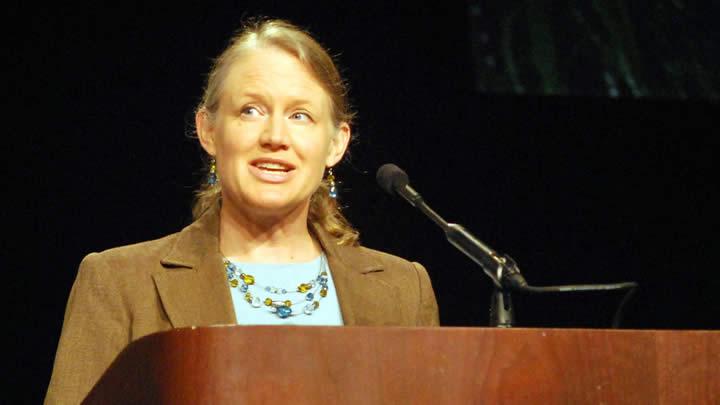Engineering prof's paper gets national recognition

Calvin College engineering professor Gayle Ermer’s paper entitled “The Four Pillars of Manufacturing as a Tool for Evaluating Course Content in the Mechanical Concentration of a General Engineering Curriculum,” received top recognition at the American Society for Engineering Education’s (ASEE) annual conference in Indianapolis.
Her paper takes the four pillars of manufacturing—a framework to promote understanding of the ideal content of an undergraduate program in manufacturing engineering—and uses those pillars as a tool for analyzing the curricular content of a general engineering degree with a concentration in mechanical engineering.
“Two years ago I was exposed to a framework for laying out the expected content of a manufacturing engineering degree,” said Ermer. “Although we don’t have a manufacturing specialty [at Calvin], I thought this framework would be helpful in deciding what to include in the manufacturing course that I teach. That was the motivation for the paper.”
In her paper, she uses the four pillars to evaluate the content of a required manufacturing processes course at Calvin College to ensure that students are exposed to the best possible combination of manufacturing topics. “A comparison of previous course content with the content areas of the four pillars, in the context of the rest of the program requirements, helped to identify opportunities for improvements,” wrote Ermer in her abstract for the paper.
Her paper has already led to changes in the Calvin course’s content in an effort to better prepare engineering graduates to enter the manufacturing workforce.
While Ermer has regularly attended ASEE’s annual conference as one way of staying current with the trends in teaching and the professional expectations of the discipline, she told the 3,000-plus conference attendees this week that she was shocked to be standing before them receiving this high honor:
“For many years now I have sat, like all of you, out in the audience at the second plenary talk here at ASEE, and listened to the best paper awardees, and somehow mistakenly developed the impression that all award-winning papers had to be co-authored by at least a dozen authors from at least a dozen different institutions with major funding in the hundreds of thousands of dollars. I felt like my own much smaller-scale work was bound to be overlooked. I hope that my receiving this award can be taken as an affirmation of the many seemingly insignificant projects that go on in both small and large institutions that all contribute, in their own less conspicuous ways, to the advancement of knowledge in engineering education.”






